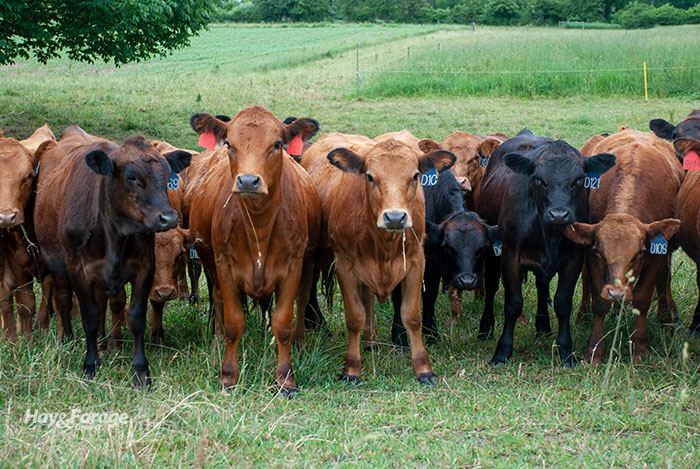
Spring — the time of year when pastures are green, growing, and soil moisture is plentiful. So, does that make grazing decisions easier or more difficult compared to mid-summer or fall when pastures are slower to grow and moisture may be lacking?
The answer to this question may rest in the type of grazing system employed. For those “turn ‘em out and let ‘em run” producers, spring and early summer may be a welcome and worry-free time of year. Of course, by mid-summer there is often little left for the cattle to run to. As the old saying goes, overgrazing produces a drought every year.
To be sure, a lack of adequate soil moisture offers significant challenges, regardless of the grazing system; however, for serious rotational grazers, spring offers its own unique set of challenges if the goal is to keep livestock on high-quality, vegetative forage.
When to open the gate?
One of the key decisions that needs to be made this time of year is when to turn cattle out on pasture.
Most experts agree that waiting too long will quickly put you behind right out of chute. Rather, it’s generally recommended to start early but with two big caveats . . . offer larger areas and keep the animals moving. Both are needed to prevent overgrazing that will be detrimental to subsequent production.
Long-time grazing consultant Jim Gerrish likes to turn out at the two- to three-leaf stage of grass development. Others have suggested when grasses are about 6 inches tall.
“The grazing strategy we have used to minimize the effect of an explosive spring flush is to get across all of our pastures twice in the first 45 to 60 days of the growing season,” explains Gerrish in the upcoming issue of Hay & Forage Grower. “We move our cattle every day and have been doing so for over 30 years. We give fairly large areas and expect to make the first cycle in just 20 to 25 days. Utilization rate is low as we are just trying to get a bite off of most plants.
“We slow down on the second cycle by giving smaller areas while taking 25 to 35 days to get around. Our objective on this cycle is to take a little deeper bite to remove elongating stems. When undeveloped seedheads are being elevated from the base of the plant, they are highly nutritious and palatable. As we make paddocks smaller and increase stock density, the likelihood of grazing stock removing undeveloped seedheads is high,” he adds.
By having the developing seedheads within the stem removed, new tillers are initiated, and these will result in vegetative growth for later in the season. By using this approach, Gerrish reports he has been able to keep seedhead production to just 10% to 20% of the tillers that were vernalized over winter.
Chris Penrose, an extension educator in Morgan County, Ohio, is in agreement with the fast-rotation strategy. “The fast rotation will reduce the chances that animals will graze too close, and, if the ground is wet, pugging will be minimized,” he says.
Penrose thinks it’s a good idea to skip paddocks at least once where you fed hay this winter to allow them to recover. This will also reduce the amount of summer weeds by allowing new grasses to establish.
Forget early nitrogen
Ultimately, the goal of spring grazing is to stay ahead of the growth flush and avoid having cattle in paddock after paddock that consist of a sea of seedheads by late spring.
Gerrish offers another word of advice to meet this goal. “Don’t fertilize pastures with nitrogen in the spring,” he asserts. “All that does is accelerate and accentuate decline in nutritive value of spring forage. If you are going to use nitrogen fertilizer, do not apply any until after 45 to 60 days of grazing. This will allow most of your applied nitrogen to support growth of new spring-initiated vegetative tillers rather than just growing stems and seeds.”
Rather than using nitrogen, Gerrish promotes the use of legumes at a level of 30% to 40% of the total forage production. Such a strategy will not only eliminate the need for purchased nitrogen, but it will also help pastures hold nutrient value for a longer period of time, offering a longer window of time to manage the spring growth flush.

